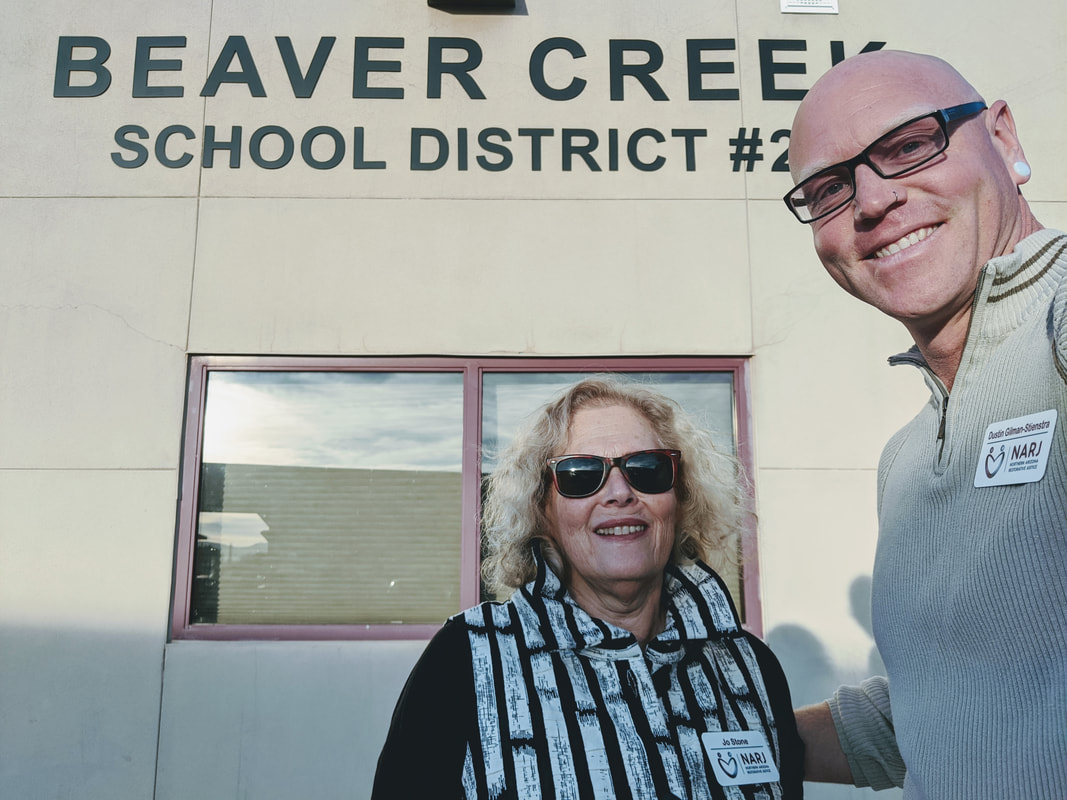|
On November 18, Dr. Jo Stone and I were asked to describe the work of Northern Arizona Restorative Justice (NARJ) with the teachers and administrators of Beaver Creek School in Camp Verde, Arizona.
We sat in a circle with fifteen teachers and staff members in true restorative tradition. The practices of restorative circles may seem revolutionary to some within our modern culture, but they are as old as humanity. They are not the usual way most of us have learned to resolve conflicts, but many of our ancestors sat in circles to repair relationships without creating further harm. They looked instead, to repair the harm. These circles continue to be used worldwide to address and heal the wounds of violence, harm, and trauma. The staff of this school face daily behavioral challenges from the students in their classrooms. The kids, from 1st to 8th grade, sometimes do things that leave the teachers scratching their heads, thinking, “what were these kids thinking?” and “how could they do this?” These challenges get in the way of other education. As one teacher commented on behavioral issues, they said, “We could have a whole class, just dedicated to this.” Lack of time to meet kids’ needs is the biggest obstacle standing in the way of the teachers’ ability to address these challenges, since they are clearly not hampered by lack of desire or effort. They have learned trauma informed practices to better meet the needs of the many kids who have experienced trauma. The teachers had learned about restorative practices by reading the book, Better than Carrots or Sticks, and had had some success using restorative practices to deal with a very serious situation. They saw kids take responsibility for their choices, one of the most difficult outcomes to achieve, and the main reason restorative practices are so successful. Punishment, on the other hand, can often produce defensiveness, which blocks kids’ ability to be accountable. Restorative circles are different because they allow everyone involved to have an opportunity to talk about the harm that happened. Rather than simply discipline a behavior, there is a discussion about how the actions affected everyone. The discussion begins by addressing the question, “What is the harm that was done?” In hearing from multiple perspectives directly, in a safe circle, the people who created the harm are shown the consequences of their actions. Once the responsibility is understood by everyone in the circle, we ask, “How can we repair the harm?” and “Who is responsible for that repair?” The circle then discusses what repair looks like. Restorative practices are not a program. It is a paradigm shift in how we see and address conflict. It is not meant to be just another “add-on” to a school’s already full plate. It is meant to be a different way to approach relationships and harm. Restorative practices, at their most effective, can be used alongside trauma informed practices, instructional practices, equity practices, and mindfulness practices. Repairing and restoring harm is a community-oriented exercise. It requires curiosity and vulnerability. It requires an understanding of trauma. And it requires deep listening and learning. At the end of our meeting, we and the teachers agreed that connection circles bring us closer to the solution. We offered to support their efforts by having NARJ volunteers attend and help facilitate their circles. Finally, we agreed to continue to support the school staff who are doing amazing work daily to meet the needs of our youth. Northern Arizona Restorative Justice is looking for more volunteers to be a part of our circles or to train as a facilitator. Training is scheduled for early 2020, where attendees can learn how to restore relationships with restorative circles. If you are interested in meeting the needs of our schools and connecting your gifts to our community, please contact us by filling out the volunteer information form on our website at www.narj.org We would love to have your support in meeting the needs of our hurting youth. Thank you for reading and for being such an amazing community to serve, support and work alongside.
0 Comments
|
Jeremy
|
